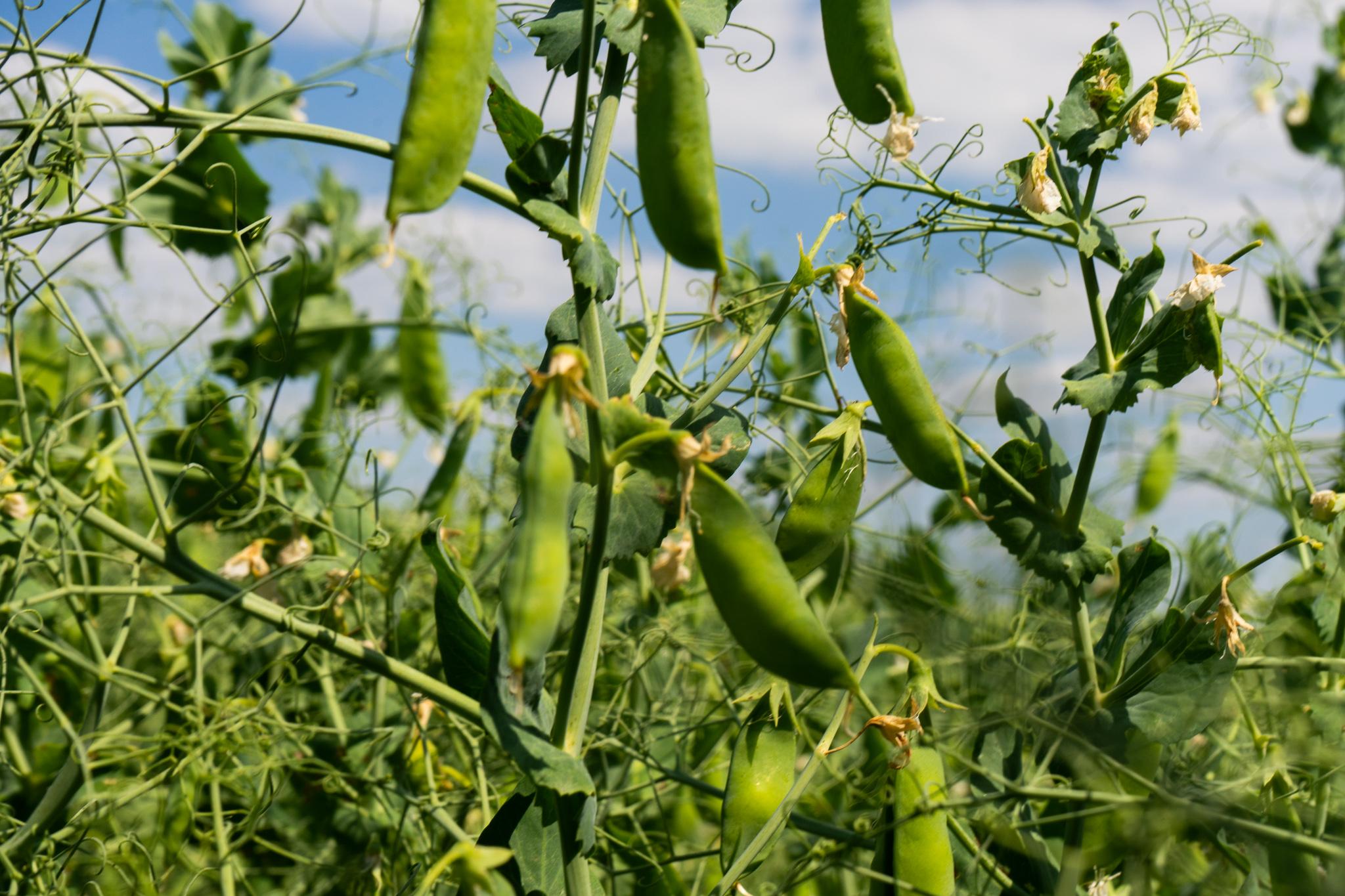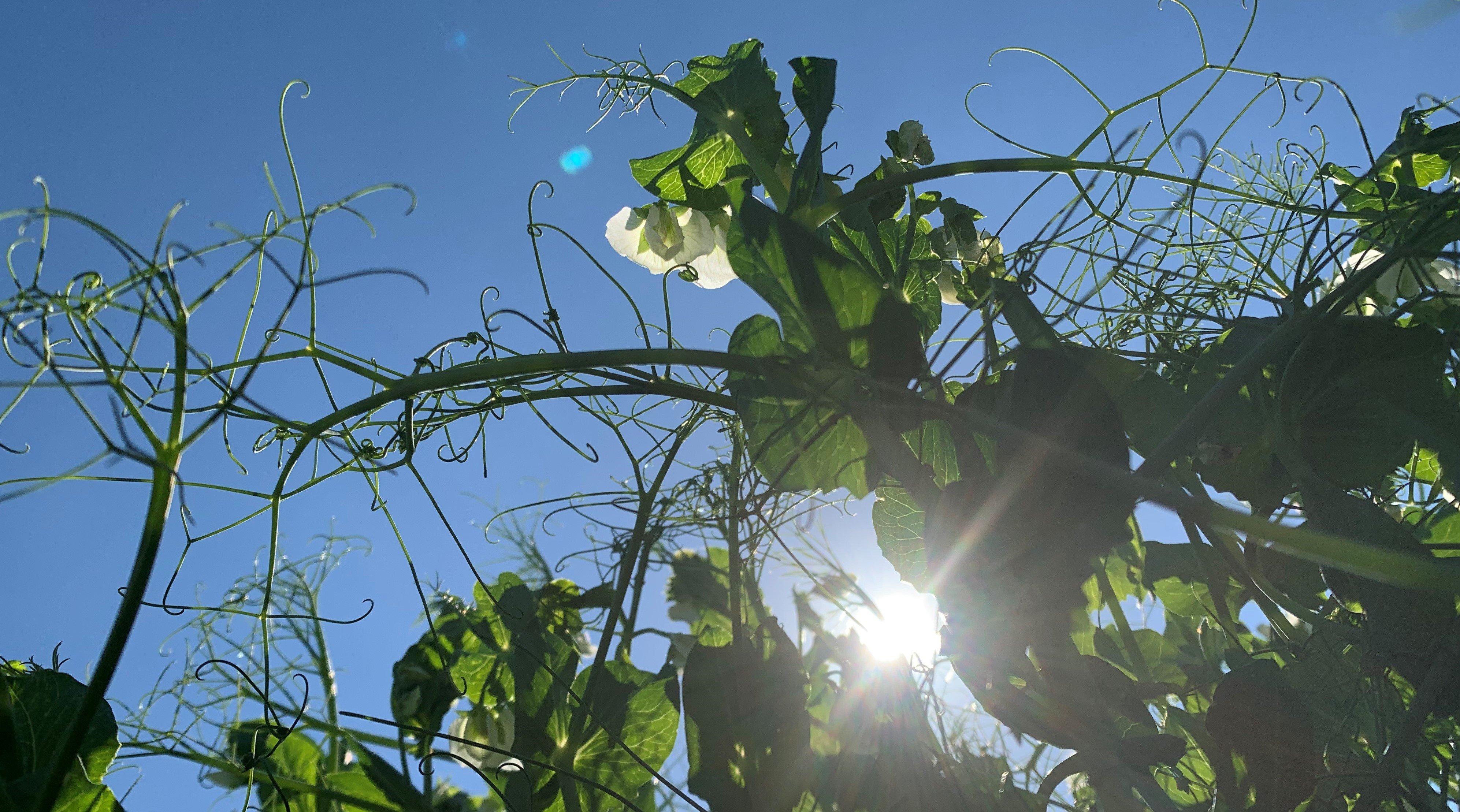"Transitioning to organic is complicated. But peas are easy."
Eric Thalken. Dorchester, Nebraska.
Born into a corn-and-cow family, Eric Thalken has followed a winding path in search of more sustainable ways to grow food. His journey took him from Pennsylvania to New Hampshire to Wisconsin and back to his home state of Nebraska. Now he’s part of a new generation of farmers finding success with regenerative growing practices — with peas at the center of his plans.
Thalken traces his independent streak to his early days in Philadelphia. “I had the counter culture ingrained in me in Philly. I rebelled against conventional.” At age 30, he “quit the race” and went to work on a 30-acre farm growing organic vegetables for markets in and around Philadelphia. His goal was not to start farming, but to homestead and grow food.
LEARNING FROM LEADERS
Early on Thalken applied himself to studying progressive agricultural practices. “The more I started reading, I got really into ‘sustainable,’ which morphed into ‘regenerative’.” He moved to New Hampshire to manage a herd of biodynamic dairy cows. It was then Thalken discovered the book The Biological Farmer by Gary Zimmer.
This book, a founding text of the regenerative movement, deeply affected Thalken’s thinking. When he reached out to Zimmer to express interest in his ideas, the influential farmer invited Thalken to come work on his farm.
As a mentee at Zimmer’s organic dairy in Southeast Wisconsin, Thalken began looking for a way to put all this thinking and experience to work. “I knew I could do something positive, I could do it over thousands of acres” Thalken recalls. “I wanted to be a model for others.” That ambition brought him to Southeastern Nebraska to take his craft to the next level.
BRINGING IT ALL TOGETHER
Sustainable farming is still an anomaly in this region. “The older generation has been doing the same things for a long time,” he says. “They don’t see reason to change.” But Thalken found partners willing to try something new. He began a gradual transition to organic production on around 2,200 acres of farmland.
Thalken grows organic and transitional corn, soybeans, forages, and PURIS yellow field peas. He also manages a herd of cattle, whose rotational grazing supports the farm’s soil health year round. The synergy between cover crops, grazing and crop yield is key to Thalken’s strategy.
While transitioning to organic is complex, Thalken says peas have been the easy part. “You plant peas very early. There might even be frost left in the ground.” He saw results right away. “We did 45 acres of peas the first year, and it was awesome. PURIS has the best genetics for my region hands down.”
Used as a cover crop, PURIS Peas provide excellent weed control and supply as much as 85 percent of the farm’s nitrogen fertility. Those benefits allow Thalken to double crop corn in July after peas are pulled off. “There’s enough fertility there after peas, we can do whatever. You don’t need to add anything,” he says. “If we get 80 bushels of corn per acre, it blows everything out of the water. And it’s the best looking corn on the farm.”

GROWING THE SUCCESS
With cattle and crops, Thalken not only gets the benefits of grazing, he takes advantage of a double market. “Vegan protein from peas allows us to satisfy both markets—meat and beyond meat.”
Now he’s making peas a bigger piece of the plan. “After doing it for five years, we understand it well enough to be confident,” he reports. “Next year, we’re hoping to go whole hog, between 500 and 700 acres.”
Thalken knows that the regenerative movement is sustained by grower cooperation. So he stays connected to other forward-thinking farmers, exchanging advice on cover cropping and grazing with some 20 other organic farmers and using platforms like AgTalk and Twitter to share information and encouragement.
While conventional farming practices are still entrenched in his region, Thalken sees change on the horizon. Organic and regenerative approaches will continue to ramp up as farmers see success year by year. “It just takes a willingness to try.”




